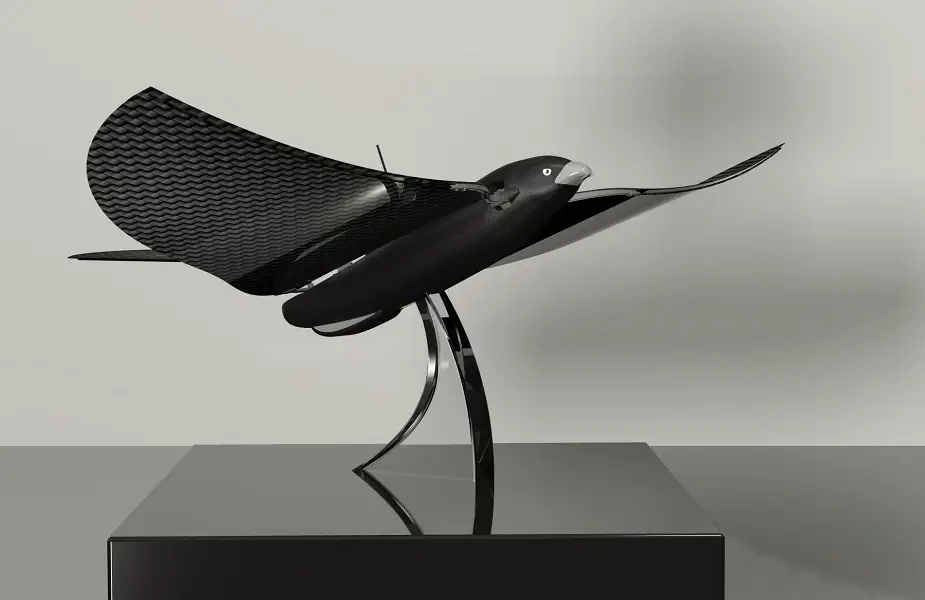The French Ministry of Armed Forces recently unveiled a drone project inspired by bird and insect flight movements.
Follow Air Recognition on Google News at this link
 The Metafly (indoor and outdoor flight) (Picture source: XTIM)
The Metafly (indoor and outdoor flight) (Picture source: XTIM)
The BIOFLY project aims to explore the capabilities and performance of biomimetic drones with the aim of stealth, by imitating the flight of a bird or an insect. This project is supported by the TPE XTIM, the Institut des Sciences du Mouvement de l’Université d’Aix Marseille (Institute of Movement Sciences of the University of Aix Marseille), the Laboratoire Lorrain de Recherche en informatique et ses applications (LORIA) (Lorrain Laboratory for Research in Computer Science and its Applications) and is funded by the Innovation Agency of Defense (AID).
The use of flapping wings for a drone offers a multitude of flight possibilities (beaten, gliding, quasi-stationary) with combinations of multiple trajectories, which are not possible with fixed-wing (aircraft) or rotary-wing systems.
The flight with flapping wings reinforces the stealth of the drone by making it possible to imitate the flight of a bird or an insect and thus to confuse it in its appearance and behavior.
The work of the BIOFLY project is based on the Bionic Bird drone, an electronic bird developed in 2014, with carbon fiber wings and a body made from polymers.
 The Bionic Bird (outdoor flight) (Picture source: XTIM)
The Bionic Bird (outdoor flight) (Picture source: XTIM)
It is therefore, from the Bionic Bird, to improve the propulsion system, the mechanism of movement of the wings and the improvement of the flight capacities. These improvements include the addition of piloting assistance, the automation of flight sessions such as straight line flight, the ability to vary the flight speed, with the possibility of quasi-stationary flight, but also an increase in the speed of these drones.
Research efforts focus primarily on the development of a new flapping-wing flight architecture as well as the integration of an on-board camera requiring stabilization against oscillations induced by flapping wings.
An interest for the Ministry of the Armed Forces
BIOFLY will meet several military needs, including the stealthiness of drones in use as well as maximizing the performance of several categories of drones: speed with endurance of fixed-wing drones and hovering capability of rotary-wing drones.
For a dismounted combatant, it has many advantages, in particular its stealth, its lightness (50g) and its ability to be remotely operated by a smartphone.
This project was presented on the stand of the Defense Innovation Agency at La Fabrique Défense in January.
For more biomimetic drones and inspired-by-nature technologies, see also:
- Will future UAVs fly like a bird ?
- Animal Dynamics creates biomechanical small-UAS based on dragonfly
- Self-righting for fixed-wing drone, inspired by the elytra of ladybug
- Mosquito night navigation inspires new UAV obstacle avoidance system
















